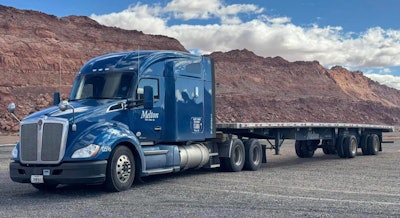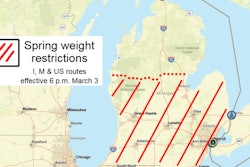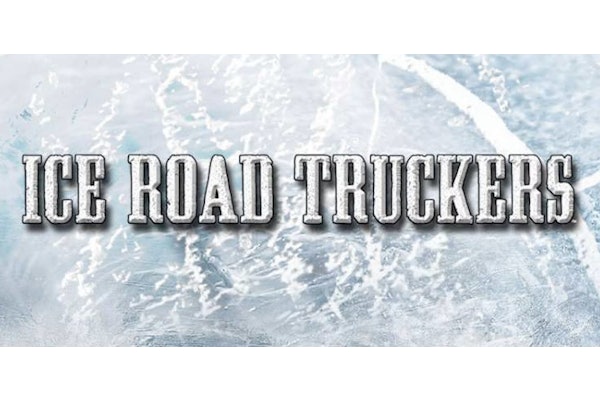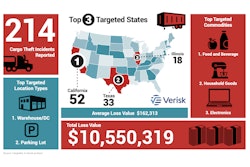
The trucking industry's top concern is the economy. Although market conditions will likely improve in 2025, uncertainty has spread through the frontlines during the prolonged freight recession, and drivers are worried about their livelihoods.
Many of the nation's top motor carriers now use powerful custom mobile apps that eliminate workday uncertainties. The technology’s transparent, structured information and integrated workflows keep drivers well-informed and less stressed.
In April 2024, Melton Truck Lines, one of the nation’s largest flatbed carriers with more than 1,400 power units, deployed a custom app from Eleos in tandem with an ELD telematics platform from Geotab. The Tulsa, Oklahoma-based fleet replaced an in-cab telematics and ELD system that caused drivers to make mistakes and experience frustration.
Melton Truck Lines’ custom mobile app is a driver-focused tool designed to improve communication, reduce stress, and enhance efficiency. It has a unified interface for in-cab tablets and smartphones, providing step-by-step load instructions, real-time updates, and direct communication channels. The technology helps drivers stay informed and improves customer service to secure more high-value freight in a challenging economy.
Communication breakdowns are one of the biggest challenges in trucking. To reduce mistakes and improve efficiency, Melton Truck Lines built a mobile app that gives clear, step-by-step instructions to drivers. The custom app informs drivers how to complete each load successfully, giving them precisely the information they need when they need it using:
- Prerequisites. Melton provides instructions for specific points in a load’s lifecycle. Its app ensures drivers follow each step before proceeding to the next. Prerequisites have multimedia elements like videos and PDFs so drivers can watch videos about properly securing and tarping loads or view a full-color map that shows precisely where to drop trailers at a facility. Other site details included in the load instructions assist drivers with trip planning, such as if the customer has overnight parking, restrooms, vending machines, and more. “We take out the guessing game, which removes driver stress,” says Dustin Dennis, director of operations and driver management.
- Acknowledgements. To ensure accountability, drivers must acknowledge each instruction and provide proof of completed tasks, such as photos of properly secured loads. The system ensures drivers know what to expect at every stop and what is required, explains Angie Buchanan, vice president of operations.
Information sharing is crucial for reducing driver stress and enabling better decision- making. To ensure drivers see pertinent information as soon as it is posted, Melton's app features dedicated news channels for different aspects of operations: The safety channel provides critical updates about weather conditions and road closures.
Meanwhile, the operations feed includes a real-time capacity demand map that helps drivers plan their routes and anticipate load availability. Melton uses a first-in, first-out dispatch system; drivers can check their position on the dispatch board and plan accordingly.
“It starts a conversation that they weren't privy to before. They can anticipate what today will be like, and then we update it throughout the day,” Buchanan says. Suppose a driver empties his load and knows 15 other drivers are waiting for their next load in the area. The driver can find a truck stop nearby, shut down, and plan to be ready the following day.
“The most powerful thing is sharing knowledge with drivers. When information is absent, they often fill that void, and sometimes, they choose the worst narrative,” Dennis says.
The channels for over-the-road and regional drivers provide information specific to each operation. Beyond the app, Melton communicates through a private website by holding bi-weekly live sessions. The sessions often feature guests from different departments addressing driver concerns, from equipment maintenance to sales executives discussing freight volumes and load wait times.
No load is created equal. Some customers expect lots of communication and touchpoints and stringent on-time delivery. Melton handles VIP customers by automatically sending drivers special notifications through the app when they are assigned high-priority loads. They emphasize the importance of on-time delivery and communication so drivers understand their role in maintaining customer relationships and securing future business.
“Some customers will adjust the freight volume they give us on a week-to-week basis based on scorecard performance,” Dennis says.
The system also streamlines proof of delivery processes, leading to faster customer payments and improved billing accuracy.
A favorite feature among drivers is a "Rate My Load"; survey that allows them to provide feedback about their experiences. Drivers can rate load factors like ease of securement and treatment at facilities. Melton has a dashboard to track the results and respond to areas that need improvement.
“We report back to the drivers to say, ‘This is what we've done,’” says Dennis, noting the feedback leads to tangible improvements. Some customers have added amenities like showers and restrooms in response to driver comments.
Melton also uses the feedback to ask for more business from customers with driver-friendly freight.
Implementing the custom app has yielded measurable benefits. Buchanan points to improved Workhound scores and reduced turnover rates, even during challenging economic conditions.
Looking ahead, Melton plans to integrate additional features such as expiration tracking and preventive maintenance scheduling to enhance driver satisfaction and efficiency. The approach to driver communication and support demonstrates how trucking technology can create a more positive and productive working environment, benefiting drivers and the company's bottom line.










